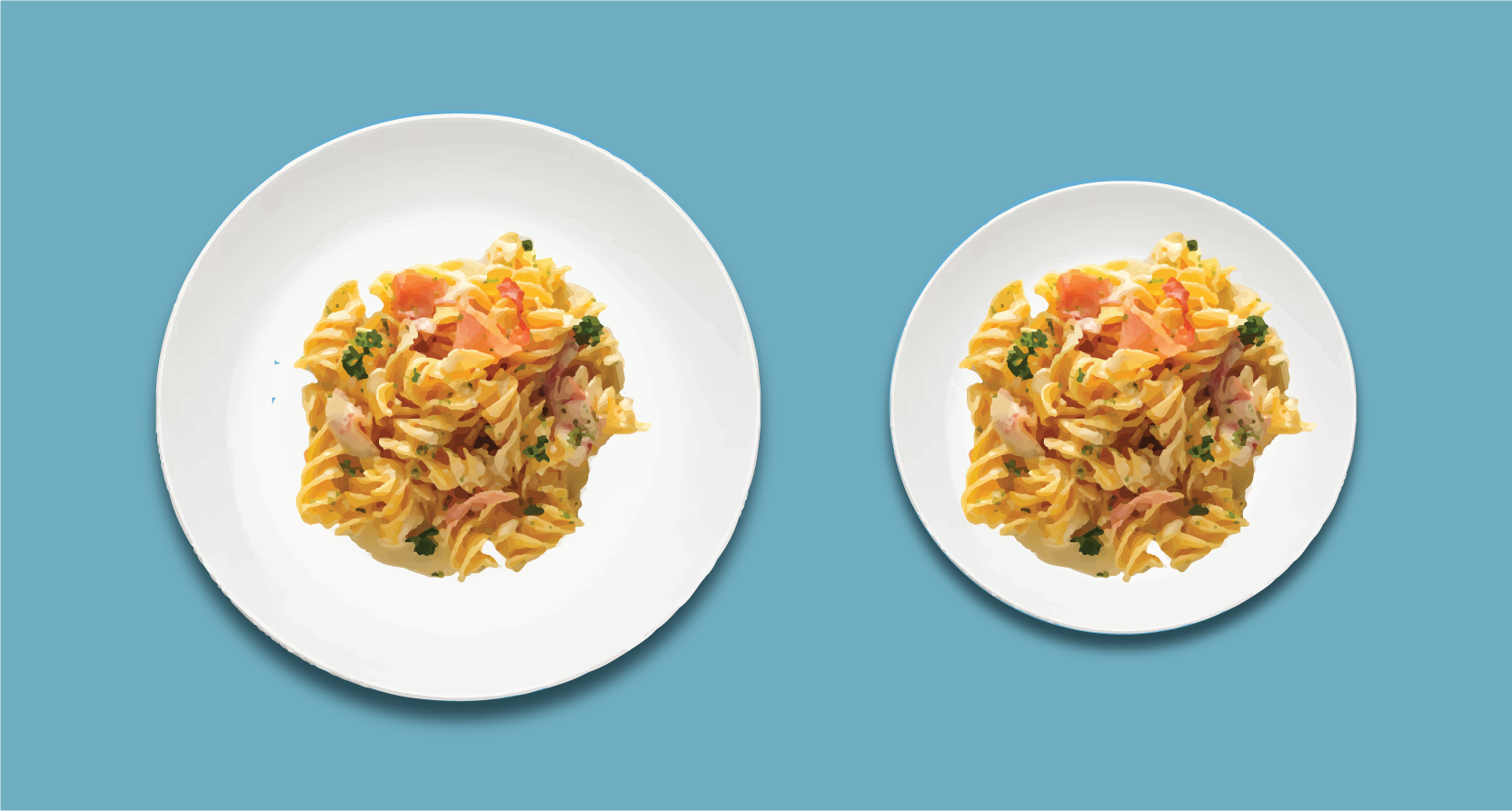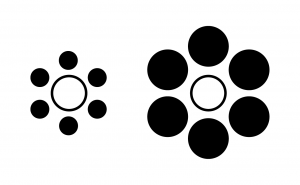
This is a classic. Still, we thought that X-mas might just be the right occasion to write about Wansink’s famous study of the effect that your plate’s size has on your intake of calories.
Midless Eating
Brian Wansink is professor in consumer behavior and nutritional science. However, to most people outside of academia he is perhaps best known as the author of Mindless Eating: Why we eat more than we think (2006).
The multiple studies of food psychology and behavior reported by Wansink in Mindless eating carries a simple message: most of our eating behavior occurs through non-conscious processes and is thus also affected by cues, feats, and factors that we do not know about. In the language of Kahneman: most of our eating behavior is controlled by System 1.
Plate Size
One of the features that affect how much we eat and hence also how many calories we consume is plate size. In a study carried out by Wansink and his team it was shown that moving from a 12-inch dinner plate to a 10-inch dinner plate leads people to serve and eat 22% less!*

Figure 1. Illustration of Ebbinghaus optical illusion.
Obviously, plate size shouldn’t have any effect on an unconstrained and hyper-rational person. Such a person would have a plan as to how much to eat and know exactly how to carry this plan out to perfection.
Such ideal behavior is by no means unattainable. Heck, I once had great success monitoring my calorie intake through an electronic food diary called Madlog. The only problem was that my everyday life didn’t allow be to give that much attention to closely monitor my intake. Weighing and measuring everything that I was eating throughout the day while doing my job and enjoying myself with my family turned out to be impossible. It just required too much effort and attention from system 2.
Consequently, as so many others, I need to find some simple and smart ways and heuristics to nudge myself to a healthier lifestyle… and when we can’t manage to monitor the details of everything we eat, plate size does matter.
Why Plate Size Matters
There are several causes to why the size of your plate matters. For one, the size of your plate effects the visual representation and following evaluation of how much food is on your plate.
Of course, while this may cause you to put more food on your plate, it isn’t sufficient for making you eat more. Unfortunately, your brain takes care of that – often even if you think about.
For one, food on a plate in front of you acts as a multi-level sensory cue for your brain to activate eating behavior and continue eating until you reach your physical limit. Behind this behavior lies the fact, that we didn’t evolve at McDonalds, but in environments where scarcity of food was the fundamental human condition. Perhaps that explains why my Grand mom always says “eat while you can”.
Second, it takes a while before your stomach gets around sending that signal to your brain, that you’re full. Some say that it takes as much as 15 minutes – and those 15 minutes can become very dangerous for your health.
Finally, there are social norms associated with leaving food on your plate. These might in turn be associated with norms of masculinity, politeness and norms of sustainability – it’s masculine to eat much, it’s not polite to leave food on the plate when you’re a guest and it’s just plain wrong to throw out food. All of these values enforce the norm of finishing your plate – especially when you think about it.
Do Yourself A Favor – Nudge Thyself
Now there is little chance that your brain or stomach will change. Further, the values coordinated through social norms may be to our liking and thus a matter of preference that it is not our job to judge or influence.
But fortunately, the size of our plates is under your control and thus you can nudge yourself. By simply finding some smaller plates you can affect the amount of food you eat. Also, you may do your guest a favor at the X-mas dinner – after all, it’s unfortunate to kill your guests slowly by having norms of masculinity, politeness and sustainability finish them off.
Read more:
- Wansink, Brian (2006) Mindless Eating: Why We Eat More Than We Think. Bantam Books.
- Wansink, B., & Van Ittersum, K. (2007). Portion size me: downsizing our consumption norms. (download here)

